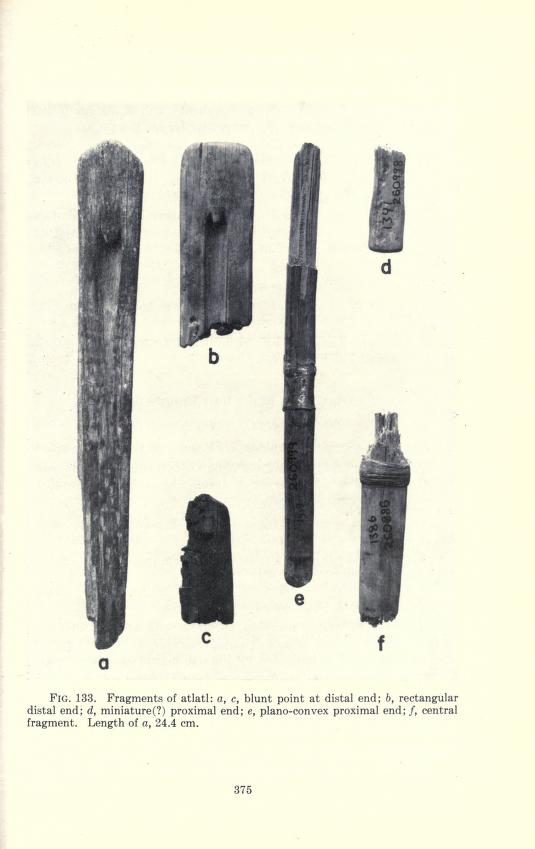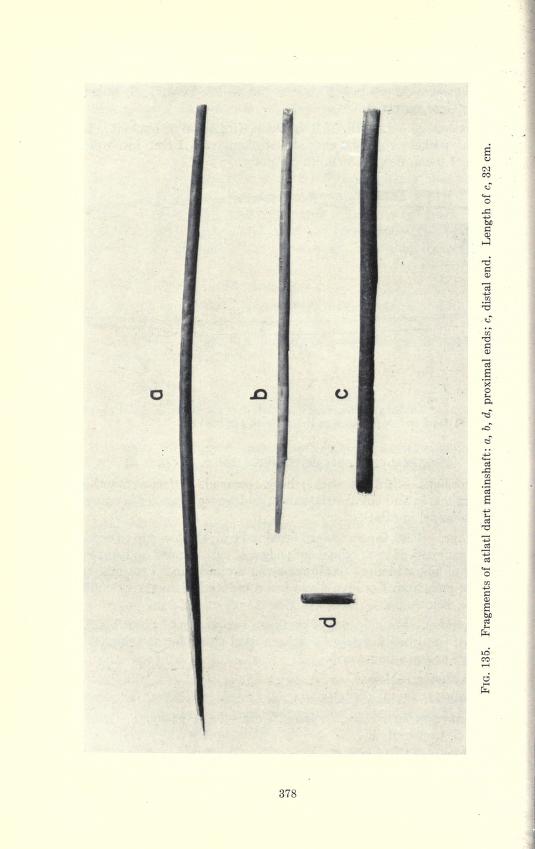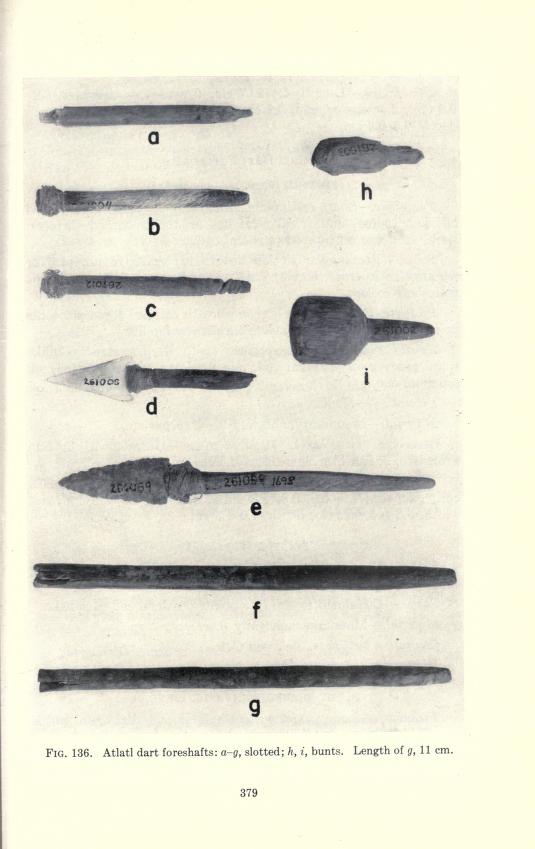Fragmentary atlatls and darts from Tularosa Cave, NM
-Justin Garnett, 2012
Tularosa Cave is a rockshelter atop a talus slope which overlooks the Tularosa river in west central New Mexico. Cave deposits consisted mainly of a Mogollon refuse midden, beneath which was found Basketmaker II material. An excellent report on the artifacts was prepared by Paul S. Martin, the atlatl tackle portion of which I have summarized below. Martin oversaw the excavations at Tularosa Cave in 1950.
The Tularosa dart mainshaft fragments are of typical Basketmaker II dimensions and construction, having been made from peeled and rubbed willow shoots and of dimensions similar to complete darts recovered at such sites as White Dog Cave in Arizona. Also described are a variety of foreshafts, photos of which can be seen in the plates below.
The atlatl fragments are also typical, all fragments (distal and proximal) have been identified as Oak. Of particular interest is distal fragment B, which has three small holes drilled near the break-a remnant of “fiber” cord clings in one of the holes. Martin interpreted this as an attempt to repair an old break, although it would seem more likely to be for the attachment of a feather cord or other type of streamer.
Proximal end E is of interest as well, having a 7.5cm handle and shallow finger notches wrapped in what Martin describes alternately as “leather” and “sinew”. In any event it would appear this material serves to soften the wood surface between the fingers when inserted in the loops, although these are no longer present.
Proximal end D is of particular interest, as it may represent a truncated form handle. Martin suggests that this may be the proximal end of a “Miniature” atlatl, as, to repeat his own words: “…indention is too close to (the end) to be finger grip unless fragment is miniature.” This statement is certainly true, as the overall fragment length is 4.5cm and the notches make up half that length, although the handle would certainly function well as a truncated handle, albeit somewhat thin at .4cm thickness.
Several atlatl “Charms” or “weights” are also described, but their ID is somewhat more dubious. For more information, and excellent descriptions of other artifacts, give Martin’s report a good look over.
The following plates are from Martin 1951, and are free of copyright.
This paper has has been scanned, digitized and hosted by the efforts of Archive.org, where it may be viewed at the following location:
http://openlibrary.org/books/OL7085146M/Mogollon_cultural_continuity_and_change
Reference:
Mogollon cultural continuity and change: the stratigraphic analysis of Tularosa and Cordova Caves, Paul S. Martin et al, 1952, Fieldiana v 40, Chicago Natural History Museum





